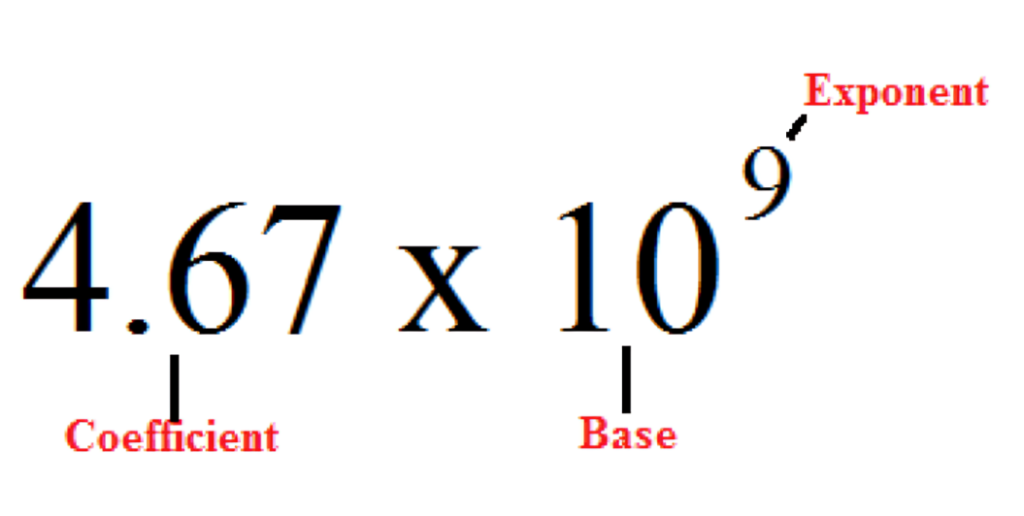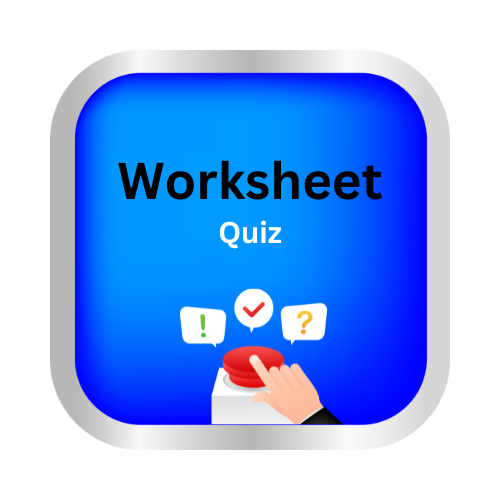Scientific notation
Key Notes:
| Scientific notation |
Definition: Scientific notation is a way to write very large or very small numbers in a concise form using powers of 10.

Format: Explain the format: a×10ⁿ,
- where a (the coefficient) is a number between 1 and 10, and n is an integer.
| Converting to Scientific Notation: |
- Large Numbers: Move the decimal point to the left until there’s only one non-zero digit to the left of the decimal. Count the number of places moved; this count becomes n.
- Small Numbers: Move the decimal point to the right until there’s only one non-zero digit to the left of the decimal. Count the number of places moved; this count becomes n, but n will be negative.

Examples:
Provide examples like converting 350,000 to scientific notation (3.5 × 10⁵) and 0.0021 to scientific notation (2.1 × 10⁻³)
Example 1: Convert 450,000 to scientific notation.
- Move the decimal point to the left until there’s only one non-zero digit to the left of the decimal:
- 450,000 = 4.5× 10⁵.
Example 2: Convert 0.00028 to scientific notation.
- Move the decimal point to the right until there’s only one non-zero digit to the left of the decimal:
- 0.00028 = 2.8×10⁻⁴.
Example 3: Convert 6,200,000,000 to scientific notation.
- Move the decimal point to the left until there’s only one non-zero digit to the left of the decimal:
- 6,200,000,000 = 6.2×10⁹.
Example 4: Convert 0.000000056 to scientific notation.
- Move the decimal point to the right until there’s only one non-zero digit to the left of the decimal:
- 0.000000056 = 5.6×10⁻⁸.
Operations: Teach how to perform operations (addition, subtraction, multiplication, division) with numbers in scientific notation. Emphasize rules for adding/subtracting exponents and multiplying/dividing coefficients.
Applications: Discuss real-life applications, such as in astronomy (measuring distances in space) and physics (noting microscopic sizes).

